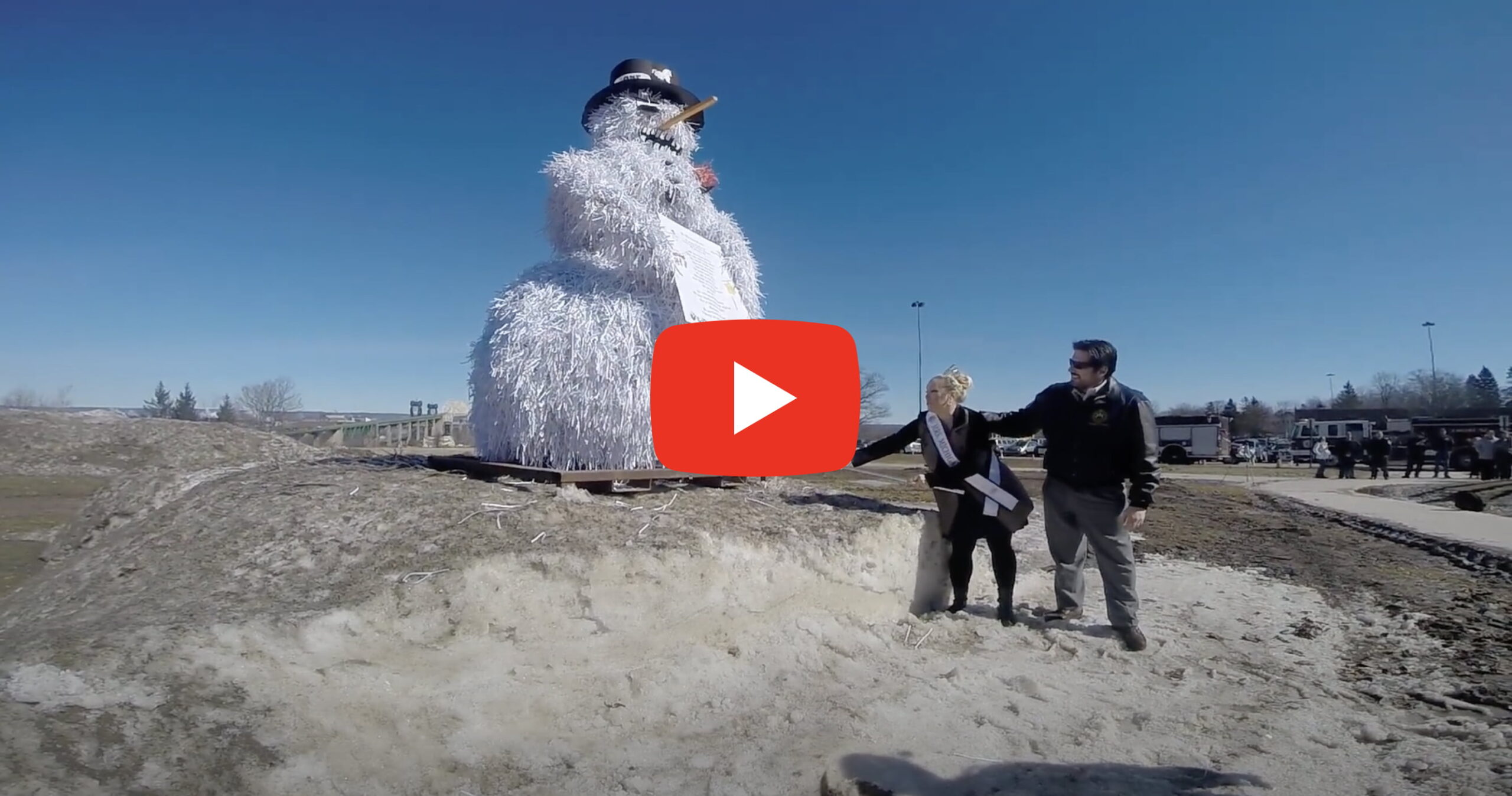Keep up with important dates this semester here
Snowman Burning 2021
Lake Superior State University holds its 50th annual Snowman Burning to welcome spring by banishing Old Man Winter March 19. Ceremonies commence at noon on Pleger Commons. This event is open to LSSU faculty, staff, and students and will be live-streamed on social media for those outside of campus. Please follow the Four Pillars of Laker Safety when attending this event.

Lake Superior State University burns a massive, paper snowman at high noon on the first day of Spring. Student Government barbecue hot dogs and serve them to the students and guests as part of the celebration.

Lake Superior State University burns a massive, paper snowman at high noon on the first day of Spring. Student Government barbecue hot dogs and serve them to the students and guests as part of the celebration.
The first spring snowman burning was held in March 1971 by the Unicorn Hunters, a former campus club. Traditionally it has been held on the first day of spring to bid good-bye to winter and welcome spring.
The burning takes its inspiration from the Rose Sunday Festival in Weinheim-an-der-Bergstrasse, Germany. In the festival, a parade passes through town to a central location, where the mayor makes a proposal to the town’s children. If the children are good, study, obey their parents and work hard, he will order the (straw) snowman to be burned, and spring will officially arrive. After the children yell their approval and make their promise, the snowman is burned.
Some people hold that rising smoke rising from the fire is supposed to ward off blizzards and usher in spring-like weather. The Unicorn Hunters capitalized on this theory during the second or third year of the event. At that time, after the snowman was burned, a blizzard passed through the eastern Upper Peninsula and northern Lower Peninsula but missed Sault Ste. Marie.
LSSU’s snowman has taken on many shapes over the years. During the 1970s, when women’s liberation was a news issue, a “snow person” was burned. In the 1980s, when clones and “cloning” were first in the news, a “snow clone” was torched. The Unicorn Hunters also burned a Snow Ayatollah Khomeni during the Iran hostage crisis. In the late 1980s, the snowmen began to take the form of a Lake State rival hockey team, usually whichever team the Lakers were playing that weekend. This was dropped after a few years when many complained that it brought bad luck to the team.
Snowmen are made out of wood, paper destined for the recycling bin, along with some straw, wire and some paint. They are usually husky and stand 10 to 12 feet tall.
Poetry is usually a cornerstone event at snowman burnings, but participation varies every year. Students, faculty, staff, retirees, townspeople and elementary school children have all written poems for the snowman burning. Usually, the master of ceremonies welcomes the crowd and gives a history of the activity. Then, the poems, if there are any, are read while the snowman burns.
Several years ago, LSSU’s public relations office turned the poetry reading into a contest. A month or so before the first day of spring, an elementary class or two was singled out and asked to write poems for the snowman burning. The students were eager to participate. They submitted poems a week or two before the event, and they were judged. The top three were read by the emcee at the ceremony. Prizes were awarded. Poets or would-be poets were given the chance to read their own works or have the emcee read them.
From introduction to conclusion, the ceremony lasts approximately 15 minutes.
The University never knew just how many people enjoyed and followed snowman burning until the event was cancelled in 1992 due to environmental concerns. A student group, the Environmental Awareness Club, protested that many toxins are released into the atmosphere when a snowman burns. While this may be true, the University pointed out that its students and staff put many more contaminants in the air just by driving to school on any given day.
The Environmental Awareness Club’s concerns were brought to light the day before the event was to occur, and the PR office abruptly canceled that year’s burning, saying that the event is supposed to be light-hearted and fun, and they didn’t want it to take on a negative tone. The PR Office suggested that employees and students leave their cars at home and walk to campus on that day to offset any environmental damage the burning snowman may have caused over the years.
On the day of the cancelled event, reporters called as expected, but so did many local residents, business people and city politicians, who were furious. It was the topic of conversation for weeks (and it still comes up!) and many students and radio personalities vowed to continued the 22-year tradition. A North Dakota radio station put organizers of the snowman burning on the air live during a call-in show. Every listener who called said he/she would vote to continue the tradition.
Radio, TV and newspaper reporters turned out on the day of the event to interview students on campus. Students gathered where the event was supposed to have occurred. They read poetry, passed out daffodils and called for the snowman to be burned.
Needless to say, the tradition was resumed the following year.
